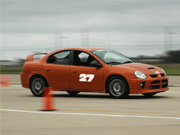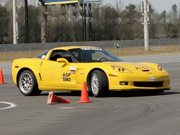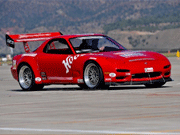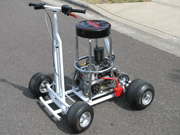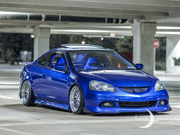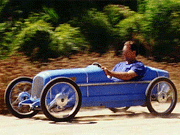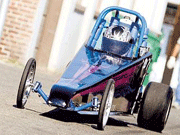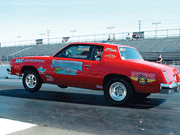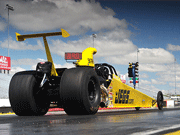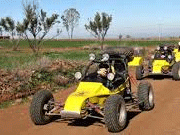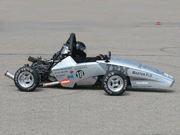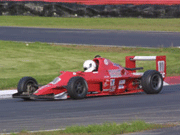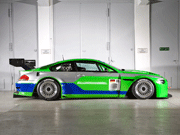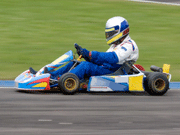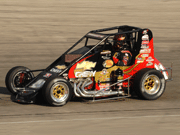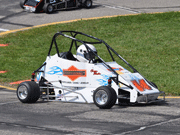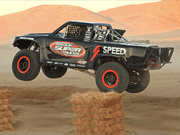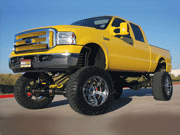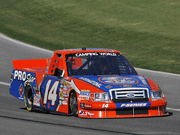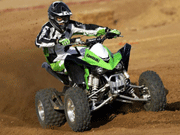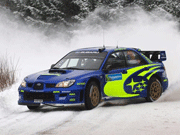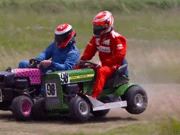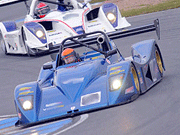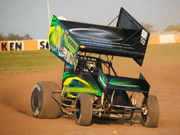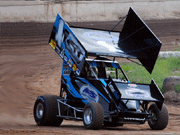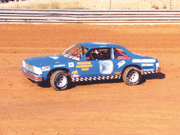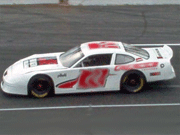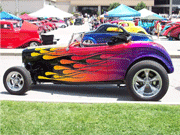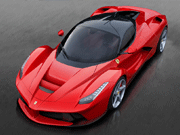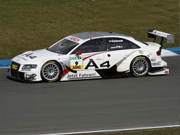Race Car, High-Performance Car and Off-Road Vehicles Types To Build
Jump to Car Type
- 1 Autocross/Solo (Entry-Level)
- 2 Autocross/Solo (Mid-Level)
- 3 Autocross/Solo (Top-Level)
- 4 Bar Stool Racer
- 5 Custom Street/Import
- 6 CycleKart
- 7 Drag Racer (Junior Dragster)
- 8 Drag Racer (Production-Based)
- 9 Drag Racer (Scratch-Built)
- 10 Dune Buggy
- 11 Formula (Non-wing)
- 12 Formula (Winged)
- 13 GT
- 14 Kart
- 15 Midget (Full Size)
- 16 Midget (Quarter)
- 17 Off-road Truck
- 18 Pickup truck (Custom Off-road)
- 19 Pickup Truck (Scratch-built)
- 20 Quad/ATV
- 21 Rally
- 22 Rider Mower
- 23 Sport Racer/Sports Prototype
- 24 Sprint (Full Size)
- 25 Sprint (Micro)
- 26 Stock Car (Production-Based)
- 27 Stock Car (Scratch-built /Late Model)
- 28 Street Rod
- 29 Supercar
- 30 Touring Car
- 31 Suggest a Race Car or Custom Vehicle Type
Race cars and high-performance vehicles come in many different varieties and each variety has its own unique characteristics that define it. To help you choose which type of car or vehicle you might wish to build, we’ve compiled 30 different types that we feel represent the majority of racing or custom vehicles in the world today. We’ve also classified each type by the characteristics that an amateur designer/builder would need to consider before starting a project:
- Whether each type begins as a donor vehicle or is built from scratch
- What level of knowledge the designer/builder needs to successfully build an average vehicle of each type
- The cost to build an average vehicle of each type (including donor vehicle if applicable)
- The effort (person-hour) to build an average vehicle of each type
- The cost to race the average vehicle of each type (Assuming the vehicle type is raced)
- The transport needed for each type of car.
These characteristics are based on an average amateur-built vehicle (Not a professional constructor), and ranked in our guide below between 1 and 100. Each car type is ranked relative to the other 29 types.
Use our Car Type Guide below to discover which car types you might be interested in building or learning more about.

Autocross (Also known as "Solo" and "Autoslalom") is a form of time-trial racing run with cars ranging from stock production cars to purpose-built race cars. Within classes that match vehicle type and horsepower to each other, racers negotiate a race course one or more at a time (not side-by-side, but at intervals) while being timed. The emphasis is placed on developing driver skill, having fun and keeping costs low. A wide variety of production vehicle types and configurations are used at the entry level of the sport. Almost any daily-driven vehicle qualifies for autocross with the exception of high roll-center vehicles which can easily roll over in sharp turns. Racing is generally on parking lots, kart tracks, road course circuits, and dirt circuits and is widespread throughout the Americas, UK and Australia. There is also a type of off-road racing called Autocross sanctioned by the FIA in Europe. | ||||||
Autocross (Also known as "Solo" and "Autoslalom") is a form of time-trial racing run with cars ranging from stock production cars to purpose-built race cars. Within classes that match vehicle type and horsepower to each other, racers negotiate a race course one or two at a time (not side-by-side, but at intervals) while being timed. The emphasis is placed on developing driver skill, having fun and keeping costs low. A wide variety of production vehicle types and configurations are used at the mid-level of the sport. Almost any daily-driven vehicle qualifies for autocross with the exception of high roll-center vehicles which can easily roll over in sharp turns. Mid-level differentiates itself mostly from entry-level by the number of changes and the knowledge required to make them work together to maximize performance. Racing is generally on parking lots, kart tracks, road course circuits, and dirt circuits and is widespread throughout the Americas, UK and Australia. There is also a type of off-road racing called Autocross sanctioned by the FIA in Europe. | ||||||
Autocross (Also known as "Solo" and "Autoslalom") is a form of time-trial racing run with cars ranging from stock production cars to purpose-built race cars. Within classes that match vehicle type and horsepower to each other, racers negotiate a race course one or two at a time (not side-by-side, but at intervals) while being timed. The emphasis is placed on developing driver skill, having fun and keeping costs low. Generally speaking, high performance cars and scratch-built cars dominate the top-level category. Still, a wide variety of production vehicle types and configurations can be used as a starting point. Almost any daily-driven vehicle qualifies for autocross with the exception of high roll-center vehicles which can easily roll over in sharp turns. Top-level Autocross vehicles differentiate themselves from mid-level Autocross by their almost complete removal of stock restrictions and their often non-street legal nature. Racing is generally on parking lots, kart tracks, road course circuits, and dirt circuits and is widespread throughout the Americas, UK and Australia. There is also a type of off-road racing called Autocross sanctioned by the FIA in Europe. | ||||||
Bar stool racers are a relatively new and interesting take on the traditional go-kart. A stool of a type you would normally find your local watering hole, is mounted above a single cylinder engine on a go-kart type frame. Handlebars (usually) with throttle and brake levers provide steering and control. Racing is generally held on small dirt/grass tracks or inside arenas with surfaces that enable a "softer" landing than asphalt. From a survey of events, most racing takes place in the USA or Canada. These machines are also considered for novelty purposes beyond racing (i.e. Parades, run-abouts at other racing events) | ||||||
Although not technically built to a regulation as part of a racing series, custom street or import cars have become very similar to touring cars or GT cars in their performance. A custom street/import car generally starts as a 2/4-door Asian, European or North American performance sedan or hatchback. The engines are typically the top performing 4 or 6 cylinder units offered in that model, although swaps are common as well. Many are stock turbocharged. The cars are then designed and built to higher level of handling and power. Cars may race in Autocross events where class regulations permit the modifications made to the car. Racing is generally on parking lots, kart tracks, and dedicated race circuits and is widespread throughout the Americas, UK and Australia. | ||||||
The Cyclekart is a small, go-kart type car with pre-WWII Grand Prix car styling. Its concept is rooted in the CycleCars of the early 20th century (~1910-1930s). The original Cyclecars were built as minimalist vehicles positioned between motorcycles and more expensive cars. They utilized motorcycle engines (Hence the "cycle" part of the name) instead of the multi-liter monsters found in touring cars of that era. They also had a minimalist chassis and simpler running gear compared to touring cars. The modern Cyclekart has a two-rail frame with cross-members upon which is built a wooden or metal monocoque-type structure that imparts additional rigidity. It uses spoked motorcycle wheels all-around and is powered by a rear-mounted 6.5 HP Honda engine driving a single rear wheel through a Comet continuously variable transmission. The front of the car is suspended using leaf-springs and a tube beam axle, while the rear has no suspension. Many of the components are Azusa engineering kart parts, making sourcing them easier. The philosophy of these cars extends beyond racing to art and nostalgia. Cyclekart creators Peter and Michael Stevenson intended the cars to be great looking, fun to drive and an expression of each builder. Many builders have created pre-war Bugattis, Delages, Alfas and Mercedes body styles but there is no restriction placed on styling (except perhaps safety). Cyclekarts have been built and raced throughout the world. They are capable of racing on dirt or pavement courses. | ||||||
Junior Dragsters (or Junior Drag Racers) are ½ scale versions of top fuel dragsters. They offer children 6 years and older an opportunity to get into drag racing (5 year olds can join a training class). The class has become very popular as a family racing opportunity and also as a training ground for stepping up to higher level drag series. Junior dragsters are characterized by their scratch-built single seat chassis, mid-engine (that is, between the driver and rear tires) rear-drive layout and covering bodywork. A roll cage is integral to provide safety for the driver. The base class uses a 5 horsepower motor, with higher horsepower used for classes for older children. The chassis is relatively easy to construct and repair and the engine is reasonably low cost to maintain. Racing is held on local drag strips and is run in the USA, Canada and the UK. | ||||||
Production cars have likely been drag raced since there were two or more available. However, the first notable racing took place in the 1930s when dry lake beds in southern California provided drag strips. They have enjoyed continued growth due to the low entry costs for beginners and the aftermarket customizability of production machines for drag racing. Production-based drag racers are characterized as a production vehicle modified with various degrees of customization in order to drive as quickly as possible in a straight line over a fixed distance. No other type of race car, except perhaps Formula One is capable of generating as much acceleration as the drag racer. As the classes progress, bigger horsepower and bigger driving tires appear, alongside more safety and traction aids. Any car configuration can be dragged raced—Front, mid or rear engine with front, rear or 4 wheel drive. The predominant configuration is front engine/rear wheel drive, but with many modern cars being drag raced, front and four-wheel drives have become more popular. Racing is held on local drag strips in almost every part of the world. | ||||||
Scratch-built (or purpose-built) drag racers evolved from early production-based drag car developments. As production cars were stripped of all but the essential components for racing, there was recognition that the production car chassis had disadvantages for producing maximum acceleration, one of which was weight. By using a scratch-built tube frame that removed the disadvantages, and enabled new advantages such as better weight distribution, the scratch-built drag racer was born. Scratch-built drag racers are characterized by their unique chassis designs, slick tires and emphasis on maximum instantaneous straight line acceleration. No other type of race car is capable of generating as much acceleration and speed as the top scratch-built drag racers (Over 300 mph (480 km/h) in just a ¼ mile (0.4 km)). As the classes progress, bigger horsepower and bigger driving tires appear, alongside more safety and traction aids. Scratch-built drag racers are built in two configurations: Front engine-Rear Drive and Mid-Engine-Rear Drive. Two styles predominate: Those with a body shell that appears like a production car, and dragsters which are long, slender single seat machines. Racing is held on local drag strips in almost every part of the world. | ||||||
The dune buggy (or off-road buggy) originated as a custom built off-road machine based on the Volkswagen Beetle ("Bug") chassis and engine. The high reliability and simplicity of the air-cooled motor lent itself well to use in desert areas of the US Southwest and Mexico, and hence the term "Dune Buggy" was coined. Since that time, the dune buggy design has evolved to cover a wide variety of off-road terrains and purposes, including racing. Dune/Off-road buggies are characterized today by a scratch-built tube frame chassis, rear or mid-engine and rear or four wheel drive. They utilize treaded, knobby or sand paddle type tires mounted to a large travel suspension front and rear that enables the vehicle to travel over very rough terrain and jumps. Racing events are held on dirt roads and on desert, wooded, and other natural terrain. Racing is held in many parts of the world, with the most well known races happening in the Mexico (Baja) and Africa (i.e. The Paris-Dakar). | ||||||
The Formula car is a form of open-wheel race car that has evolved from the early 1900s Grand Prix cars. Although the most well known forms are Formula One and Indycar, formula cars have been a staple of amateur motorsports, especially as a stepping stone to these top level series. Modern amateur cars are characterized by their scratch-built single seat chassis, mid-engine rear-drive layout and aerodynamic bodywork. Non-winged versions of the formula car place emphasis on mechanical grip and cornering nimbleness. Amateur racing classes for formula cars generally focus on designs which use a spaceframe chassis, 4 to 6 cylinder car or motorcycle engine, and fiberglass bodywork. The chassis is relatively easy to construct and repair and the engine is reasonably low cost to maintain. Racing is generally on road course circuits and is therefore most popular in parts of Europe and the Americas where road course circuits are found. | ||||||
The Formula car is a form of open-wheel race car that has evolved from the early 1900s Grand Prix cars. Although the most well known forms are Formula One and Indycar, formula cars have been a staple of amateur motorsports, especially as a stepping stone to these top level series. Modern amateur cars are characterized by their scratch-built single seat chassis, mid-engine rear-drive layout and aerodynamic bodywork. Winged formula cars use inverted wings at the front and rear of the car to provide downforce that presses the car down onto the track at speed. This enables them to corner at speeds much higher than standard road cars. Amateur racing classes for formula cars generally focus on designs which use a spaceframe chassis, 4 to 6 cylinder car or motorcycle engine, and fiberglass bodywork. The chassis is relatively easy to construct and repair and the engine is reasonably low cost to maintain. Racing is generally on road course circuits and is therefore most popular in parts of Europe and the Americas where road course circuits are found. | ||||||
GT (Grand Touring) cars are production sports cars that have been modified to race on road circuits. The Grand Touring car evolved from the earliest makes of road cars from early 1900s. They were built with luxury, style and horsepower for their era, all three of which were highly desireable to the rich clientele who bought them. These exclusive cars were raced through the 1920s and 1930s, especially in longer endurance events such as the Mille Miglia (1000 miles) that lent themselves to a "Grand touring" car. As mass production of sports cars became widespread post WWII, the availability of high powered racing cars around the world spurred an explosion of GT racing. GT race cars differentiate themselves from Touring cars by being sports cars first, whereas touring race cars generally begin life as a family-type sedan. Racing is run on road racing circuits throughout the Americas, Europe, Asia and Australia. | ||||||
Karting began with the first kart designed by Art Ingels in 1956 and has since technically evolved its basic racing technology. It is the simplest and lowest cost form of road and oval racing available but even so, the racing kart can out-compete many race cars costing 5 to 10 times as much. It is the launch pad for almost any child interested in racing (along with ¼ midget for the dirt trackers and junior dragster for the drag racers). The kart has a tube frame, to which is mounted a 1-piece axle, hubs, wheels/tires, steering, seat, fuel tank, engine, drive sprocket, and brake. Most karts use a centrifugal clutch, although some have gearboxes (Called Shifter karts). Bodywork also varies from minimal bumpers on sprint karts to full cover bodywork on ovals or superkarts. There is usually no suspension and no differential on a kart because the design bypasses the need for these. The flex in the tube frame and tires absorbs the bumps encountered and the kart uses a special front-end geometry that causes the inside rear wheel to lift slightly when turning corners (So there is no need for the rear wheels to turn at different speeds) Racing is generally held on purpose-built kart tracks that are around 1 km (0.6 miles) or on short oval tracks. Kart racing is run everywhere in the world, but is especially popular in Europe. | ||||||
Midget race cars were introduced in the USA in the 1930s and raced on short 1/5 mile (0.32 km) dirt tracks. They were the original home-built race cars and their garage builders made use of every available automotive (and sometimes non-automotive) part they could use. Some cars were even powered by outboard boat motors. Modern amateur cars have advanced in terms of technology, but the racing has the same premise: Drive as quickly around a dirt or paved oval race track. They are characterized by their scratch-built single seat chassis, 4 cylinder front-engine, rear-drive layout, and encompassing roll cage. Racing is run worldwide on local tracks, with the largest racing participation in the USA. | ||||||
Midget race cars were introduced in the USA in the 1930s and raced on short 1/5 mile (0.32 km) dirt tracks. They were the original home-built race cars and their garage builders made use of every available automotive (and sometimes non-automotive) part they could use. Some cars were even powered by outboard boat motors. Post-World War II, the Quarter midgets appeared much as their full-scale counterparts did, as home-builts. Since that time, the Quarter midgets have evolved into modern race cars parallel to the full-size Midgets. The Quarter midgets are ¼ scale of the full size midget cars, and race on a ¼ scale track (1/20 mile or 80 m track). They use a scratch-built single seat chassis with a 1 or 2 cylinder mid-engine, rear drive layout and all-encompassing roll carge. Racing is run in the USA and Canada on local tracks, with the largest racing participation in the USA. | ||||||
The off-road truck (Sometimes referred to as a "Trophy truck") is a specialized off-road racing vehicle that resembles a pickup truck. It is an offshoot of the original dune/off-road buggies used in the US Southwest and Baja Mexico, and shares many characteristics with them. The off-road truck is characterized by a tube frame chassis with a high horsepower engine mounted at the front which drives either the two rear or all four of the wheels. The suspension is built with long travel and is relatively softly sprung to absorb large bumps, dips and jumps the truck travels over at high speeds. The chassis is covered with composite bodywork and usually uses the space normally associated with a pickup truck bed for the storage of spare tires and support equipment. Racing events are held on dirt roads and on desert, wooded, and other natural terrain with the most well known races happening in the Mexico (Baja) and Africa (i.e. The Paris-Dakar). | ||||||
The custom off-road pickup truck is a specialized off-road vehicle designed to traverse extreme terrains such as steep-angled hillclimbs, mud bogs and boulders. The custom off-road pickup truck is characterized by a high ground clearance production 4WD truck chassis with a high-horsepower engine and large all-terrain tires. The suspension is built with long travel to accommodate the large variations in the surface terrain it will be driven over. Most trucks used in situations where roll-overs are possible will have a roll bar structure. Racing events take on my different forms. Some events test the truck and driver's ability to cross large mud bogs, while others test the truck and driver's ability to climb near vertical hill sides. Other events involve testing the agility of the truck and skill of the driver in traversing a terrain of large boulders. Events are run worldwide where suitable challenging terrain exists, but are predominantly in North America. | ||||||
The scratch-built truck (Sometimes referred to as a "NASCAR truck" or pickup truck racer) is a circuit racing vehicle that resembles a pickup truck, but in fact uses a tube frame like NASCAR Stock Cars. It is an offshoot of the NASCAR Stock car racing, and shares much in common with stock cars. The scratch-built pickup truck is characterized by a tube frame chassis with a high horsepower engine mounted at the front which drives the two rear wheels. The suspension design and chassis place the truck very close to the ground for the lowest possible CG (Center of gravity). The chassis is covered with formed sheet steel bodywork that gives the shape of a pickup truck. A rear spoiler provides downforce. UK Racing is through a spec manufacturer only and the NASCAR truck series is prohibitively expensive for an amateur racer, but the type is included in our race car types because of its potential future in local racing. This type of vehicle can be raced in the top-level of Autocross/Solo. Racing events are held on oval and road course circuits in the USA and UK. | ||||||
The Quad (or ATV—all terrain vehicle) was created as a more stable 4 wheel version of the original ATC (All-terrain cycle) or trike three-wheeler. It is a bike-type off-road machine that has been used primarily in off-road dirt-type racing. It has also been used in oval dirt and in paved track racing and fits, despite its handle bar controls and saddle seat, the definition a small race car. Quads are characterized today by a tube frame chassis, mid-engine and rear or four wheel drive. They utilize treaded, knobby, and even slick type tires mounted to an independent front and swingarm solid-axle rear suspension (usually). For off-road racing, the suspension is long-travel to enables the vehicle to travel over very rough terrain and jumps. For oval or pavement type racing the suspension has less travel and the chassis is lowered. Racing events are held on desert, wooded, and other natural terrain as well as dirt ovals and paved tracks. Racing is held in many parts of the world. | ||||||
The Rally car is a unique type of road racing car that is designed to travel at the highest possible speeds over closed public roads from a start location to an end location. The timed races (Called Rallies) often combine dirt and paved roads and can include snow and ice covered conditions. Most Rally cars are production sports cars that have been modified with upgrades throughout to increase performance and make them more durable for the punishing conditions they race under. Racing is run on roads worldwide. | ||||||
Riding mowers racing began in the 1960s as a form of novelty. Since that time they have grown into a serious form of low-cost racing. Rider Mowers typically used for racing have the cutting blades removed, the CG height lowered and the transmission geared up to give speeds of approximately 45 mph (72 km/h). To keep the racing low-cost, entry-level classes retain many stock components while most open classes allow customization of the powertrain and chassis. Racing is generally held on small dirt tracks to keep the racing competitive and close. Racing takes place in the Americas, Europe and Australia. | ||||||
The Sport Racer (and the leading edge Sports Prototype) is an evolution of the sports cars that were raced after World War II. The designs began to change from that of road-going sports cars to the purpose-built racing machines we see today in endurance racing and the 24 hours of Le Mans. Modern amateur sport racer cars are characterized by their scratch-built single or double seat chassis, mid-engine rear-drive layout and full-covering aerodynamic bodywork. Many sport racers use wings and underbody venturi tunnels to provide downforce that enables much higher cornering speeds Amateur racing classes for sport racers generally focus on designs which use a spaceframe chassis, 4 to 6 cylinder car or motorcycle engine, and fiberglass bodywork. The chassis is relatively easy to construct and repair and the engine is reasonably low cost to maintain. Racing is generally on road course circuits and is therefore most popular in parts of Europe and the Americas where road course circuits are found. | ||||||
Sprint cars began in the USA in the 1930s and 40s as modified Model T racers and evolved into purpose built cars over the 30 years that followed. Their development paralleled the Midget race car, but Sprints were based on full-size cars. The designs evolved to use V8 engines and eventually wings and roll cages. Modern amateur cars have advanced in terms of technology, but the racing has the same premise: Drive as quickly around a dirt or paved oval race track. They are characterized by their scratch-built single seat chassis, high power 8 cylinder front-engine, rear-drive layout, encompassing roll cage and big roof-mounted wings to give large amounts of downforce. Racing is run in the USA, UK, Canada and Australia on local tracks, with the largest racing participation in the USA. In the UK, New Zealand and Australia there are also cars which run on dirt tracks called "Stock Cars" which bear many similarities to Sprint cars, including front engine/rear drive and large roof-mounted wings. | ||||||
Sprint cars began in the USA in the 1930s and 40s as modified Model T racers and evolved into purpose built cars over the 30 years that followed. Their development paralleled the Midget race car, but Sprints were based on full-size cars with a longer wheelbase. The designs evolved to use V8 engines and eventually wings and roll cages. However, the cost to compete in Sprint racing also increased because of the amazing power (700-1000 horsepower) that was eventually produced by their engines. As a lower cost alternative to full-size Sprint cars, Micro Sprints were introduced which leveraged the same overall car design, but with a shorter wheelbase and 600 cc motorcycle engines. Other types are also produced, with variations in engine size from 270 cc to 1000cc or larger motorcycle engines. Racing is run in the USA, Canada and Australia on local tracks, with the largest racing participation in the USA. | ||||||
The production-based stock car (Sometimes referred to as a "Showroom Stock", "Street Stock", "Super Stock" or just "Stock Car") is a race car built on a production chassis from a car manufacturer. These cars are the original "Stock Car", and got their start in the hands of moonshiners in the USA who were attempting to outrun the authorities with their illegal liquor. They took production cars (including police cars), increased the power and lightened the chassis to provide the speed edge required over the police. The same cars were raced at first informally and eventually in small organized races. Following American prohibition, the racing continued and until the 1970s stock car racing was built around modified production cars. The production-based stock car is characterized by a production chassis with an engine mounted at the front which drives the two rear wheels and incorporating a roll-cage structure to protect the driver. Depending on the class, the vehicle may be close to stock or modified heavily. Variations of the stock car concept are used on dirt and paved ovals as well as paved road courses. Racing events have are held on circuits worldwide. | ||||||
The scratch-built stock car (Sometimes referred to as a "Late model", "NASCAR" or just "Stock Car") is a purpose-built race car which has bodywork to make it appear similar to a stock production car, but in fact uses a tube chassis instead of the production unibody chassis. Stock cars got their name originally from the fact they were built from stock production base vehicles. The scratch-built stock car is characterized by a tube frame chassis with a high horsepower engine mounted at the front which drives the two rear wheels. The suspension design and chassis place the car very close to the ground for the lowest possible CG (Center of gravity). The chassis is covered with formed steel bodywork or FRP composites that gives the shape of the production car the builder wants to represent. Variations of the stock car concept are used on dirt and paved ovals, with the dirt versions sharing characteristics with Sprint and Midget racing. Outside the USA the term "Stock Car" is often used when referring to truly stock production cars. In our race car types, the "Stock Car (Production-based)", "GT" and "Touring" are more appropriate starting points for these types. In the UK, the term Stock Car is also used to refer to a "Sprint Car"-like race car. Racing events have been held on oval and road course circuits in the Americas, Europe, Australia and New Zealand. | ||||||
The street rod is a production-based vehicle that is stylized and modified to increase performance. While not originally designed for sanctioned racing, the street rod was one of the original types of drag race car. Street rod owners vied for victory and glory in informal races on rural roads and city streets. Street Rods can be characterized as production vehicles modified with artistic body alterations and performance enhancing parts. Most vehicles which have their performance increased ("Hopped up") are modified to drag race (Drive as fast as possible in a straight line). Street Rods can have many artistic alterations, some of which include changing body panel shapes, chopping (or lowering) the rooflines, and lowering the ride height. Paint jobs that turn the vehicles into unique rolling works of art are also popular. Builders may also chrome plate components to provide a mirror like shine, and replace painted engine parts with chromed parts. Street Rods are built and driven worldwide. | ||||||
The Supercar is a modern road-legal race car usually designed as spin-offs from a manufacturer's sports prototype or Formula One racing programs. Supercars have been designed and manufactured by some of the world's top sports car makers: Ferrari, McLaren, Lamborghini, Porsche, Bugatti, Lotus, Audi, BMW to showcase their technology. For an amateur race car designer this would seem like pretty formidable company, but it has been the case that many of the supercar manufacturers in fact got started producing one-off designs that were hand-built. Modern supercars are characterized by their scratch-built double seat chassis, mid or front-engine rear-drive layout and full-covering aerodynamic bodywork. Almost all are made with composite monocoque chassis but that does not mean that space frame designs should be discounted. Many supercars use wings and underbody venturi tunnels to provide downforce that enables much higher cornering speeds. | ||||||
Touring cars are production family sedans (Usually 4-door and sometimes referred to as "saloon cars") that have been modified to race on road circuits. They are stock production machines which are usually modified internally but which retain the body and appearance of the brand and model they are promoting. Formal racing of "Touring Cars" and "Saloon Cars" has been in place since the late 1950s when production vehicles were raced with limited modifications. Today's touring cars still have entry-level classes that retain mostly stock components, but the top-levels are purpose-built and use race-oriented components throughout save for the body. Touring cars are usually differentiated from GT (Grand Touring) race cars which begin life as sports cars and have higher horsepower engines. Racing is run on road racing circuits throughout the Americas, Europe, Asia and Australia. |
Suggest a Race Car or Custom Vehicle Type
Have we missed a race car or custom/high performance vehicle type? Please let us know!
44 1 14 3

